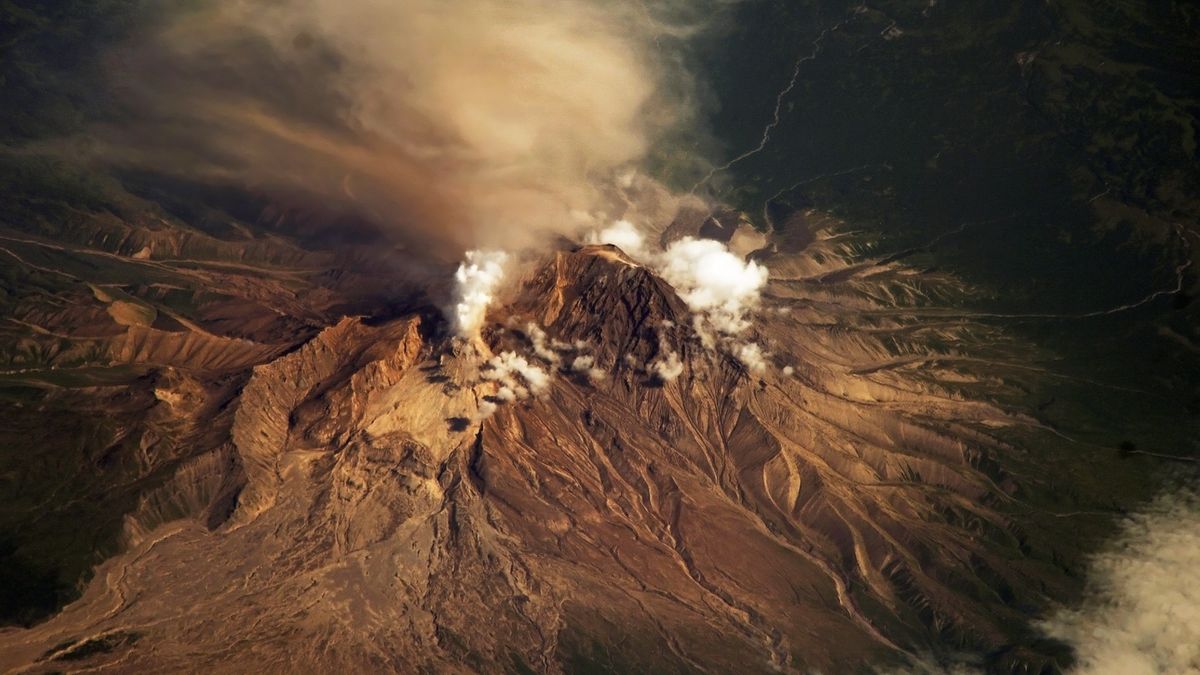Satellites watch Russian volcano erupt and blanket villages in ash
The Shiveluch volcano is among the most active in Russia.

One of Russia's most active volcanoes just erupted violently, creating plumes of ash and dust that were visible from space.
The Shiveluch volcano in eastern Russia's Kamchatka Peninsula erupted shortly after midnight on Tuesday (April 11), creating an ash cloud that spread for 41,700 square miles (108,000 square kilometers), Reuters reported. The clouds of debris emanating from the eruption prompted aviation safety notices in the area and covered villages throughout the region in ash as deep as 3.3 inches (8.5 centimeters). The fallout from the eruption was the largest in 60 years, the Associated Press reported.
As the volcano erupted, weather satellites watched from orbit, gathering data that can help visualize the spread of the ash cloud throughout Russia's far east. The HIMAWARI-9 satellite operated by the Japan Meteorological Agency, in particular, caught a stunning timelapse that shows the ash rising to heights of 11 miles (18 km) as it flows southward across the peninsula.
Related: How satellites have revolutionized the study of volcanoes
Another volcano has erupted in eastern Russia! This VOLCAT loop of IR satellite imagery and Ash height shows how the atmospheric circulation over the past 24-hours distributed ash from the #Shiveluch #volcano across nearly all of the #Kamchatka peninsula. https://t.co/XUISai5pTL pic.twitter.com/qmQipZfz8aApril 11, 2023
Another view HIMAWARI-9 visualizes the spread of sulfur dioxide as it flows from the volcano. This foul-smelling gas is produced by volcanic activity and can be toxic in high concentrations.
Luckily, no casualties have been reported from the eruption, and there were no evacuation notices issued, although it did cause power outages and school closures throughout the peninsula.
Today's explosive eruption of the Shiveluch volcano captured by the Himawari-9 satellite. pic.twitter.com/9u9XebVv1vApril 11, 2023
Shiveluch is one of the world's most active volcanoes. It has been erupting continuously since 1999 — although usually not as violently as this week's blast.
Get the Space.com Newsletter
Breaking space news, the latest updates on rocket launches, skywatching events and more!
The Kamchatka Peninsula in Russia's far east extends southward into the North Pacific Ocean and is one of the most concentrated areas of geothermal activity in the world. There are 160 volcanoes in the region, with 29 of them believed to be active currently.
Follow Brett on Twitter at @bretttingley. Follow us @Spacedotcom, or on Facebook and Instagram.
Join our Space Forums to keep talking space on the latest missions, night sky and more! And if you have a news tip, correction or comment, let us know at: community@space.com.

Brett is curious about emerging aerospace technologies, alternative launch concepts, military space developments and uncrewed aircraft systems. Brett's work has appeared on Scientific American, The War Zone, Popular Science, the History Channel, Science Discovery and more. Brett has English degrees from Clemson University and the University of North Carolina at Charlotte. In his free time, Brett enjoys skywatching throughout the dark skies of the Appalachian mountains.












